Unpacking and publishing the Phaistos Disk since 1993
HOME | PREVIOUS | NEXT | SITEMAP
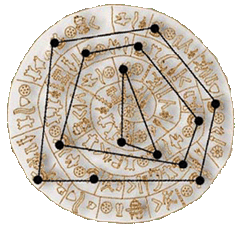
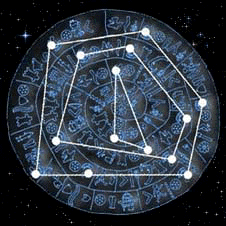
![]()
 The image on the left seems to suggest, "Spin me!" To create this animation, I made exact tracings of the Phaistos Disk. To create the animation on the left, I connected all fourteen of the Minyae pictographs with lines to reveal a triangle inside two polygons. Then, I inverted the color to change it to black, blue and white. Using gif animation software, I spun the disk with this geometry design four times 90 degrees clockwise and then set the animation on a background of twinkling stars.
The image on the left seems to suggest, "Spin me!" To create this animation, I made exact tracings of the Phaistos Disk. To create the animation on the left, I connected all fourteen of the Minyae pictographs with lines to reveal a triangle inside two polygons. Then, I inverted the color to change it to black, blue and white. Using gif animation software, I spun the disk with this geometry design four times 90 degrees clockwise and then set the animation on a background of twinkling stars.
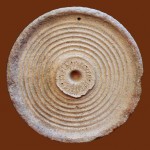
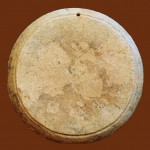 The artist of the Phaistos Disk, lacking gif animation software, perhaps composed geometric designs within spirals on pottery and then spun the wheel to observe the actions of geometry inside a spinning spiral. (left, pottery wheel excavated in Crete from the Minoan era, back of wheel and front of wheel)
The artist of the Phaistos Disk, lacking gif animation software, perhaps composed geometric designs within spirals on pottery and then spun the wheel to observe the actions of geometry inside a spinning spiral. (left, pottery wheel excavated in Crete from the Minoan era, back of wheel and front of wheel)
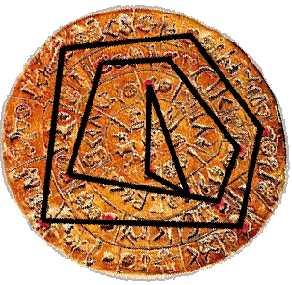
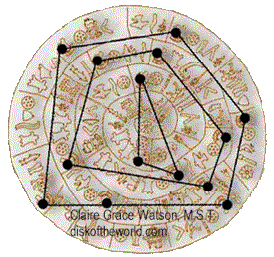
Early astronomy, involving the study of the properties of a circle and the geometry of a sphere, comes under the antique study of "containment of geometrical arrangements." In these animations we see the effects of spin on geometrical arrangments that have been overlaid onto a spiral that is contained within a sphere. As strange as it might seem to us that the Minoan astronomers would be discussing this, it is really not that far-fetched. Anyone in any period of time who studied the stars would observe the movement of the stars as a group and would certainly theorize about how the stars are fixed but also are in motion.
There was during that time a wide-spread number philosophy in the Bronze Age involving containment of geometrical arrangements, and this probably had application in astronomy. They might have concluded the movement of the stars to be some kind of illusion created by spin. If they did not actually conclude this, then certainly it could have crossed their minds and even been something they talked about. Obviously, they were brilliant astronomers. I admit to the possibility of giving them credit for more than is their due, but for the last 17 years I have been in awe of these people. And they have educated me.